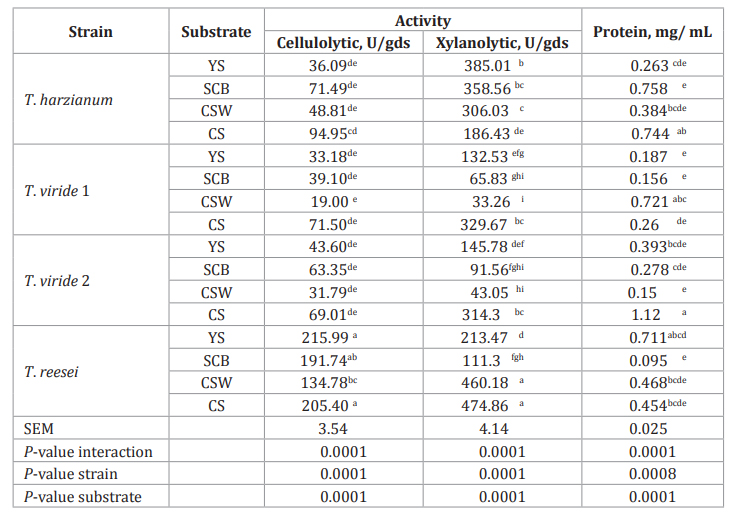Fibrolytic activity of four Trichoderma strains grown on agro-industrial residues
Palabras clave:
actividad celulolítica, actividad xilanolítica, enzimas, residuo agroindustrial, TrichodermaResumen
The aim of this study was to compare the cellulolytic and xylanolytic activities of two strains of Trichoderma viride, one of Trichoderma reesei and one of Trichoderma harzianum grown on four different substrates. Each substrate contained 20% wheat bran and 80% agro-industrial waste (corn stover (CS), sugarcane bagasse (SCB), Yucca schidigera fiber (YS), or compost elaborated from solid waste generated in the university cafeteria (CSW)). An interaction (P < 0.01) between the substrate and strain was detected for both cellulolytic and xylanolytic enzyme activities. The highest cellulolytic activity (P < 0.01) was obtained with T. reesei grown on YS, CS, and SBC, and the lowest was from the two T. viride strains grown on most of the substrates. The highest xylanolytic activities (P < 0.01) were detected for T. harzianum with YS and SCB and T. reesei with CSW and CS, while one T. viride strain exhibited intermediate and the other showed the lowest activity. In conclusion, T. reesei CDBB356 showed the highest fibrolytic activity for most of the tested substrates, a finding that suggests it has the highest potential for fibrolytic enzyme production. There is a potential application for T. reesei CDBB356 enzymes on ruminant feed supplements to improve forage digestibility.

Descargas
Publicado
Número
Sección
Licencia
Aquellos autores/as que tengan publicaciones con esta revista, aceptan las Políticas Editoriales.



